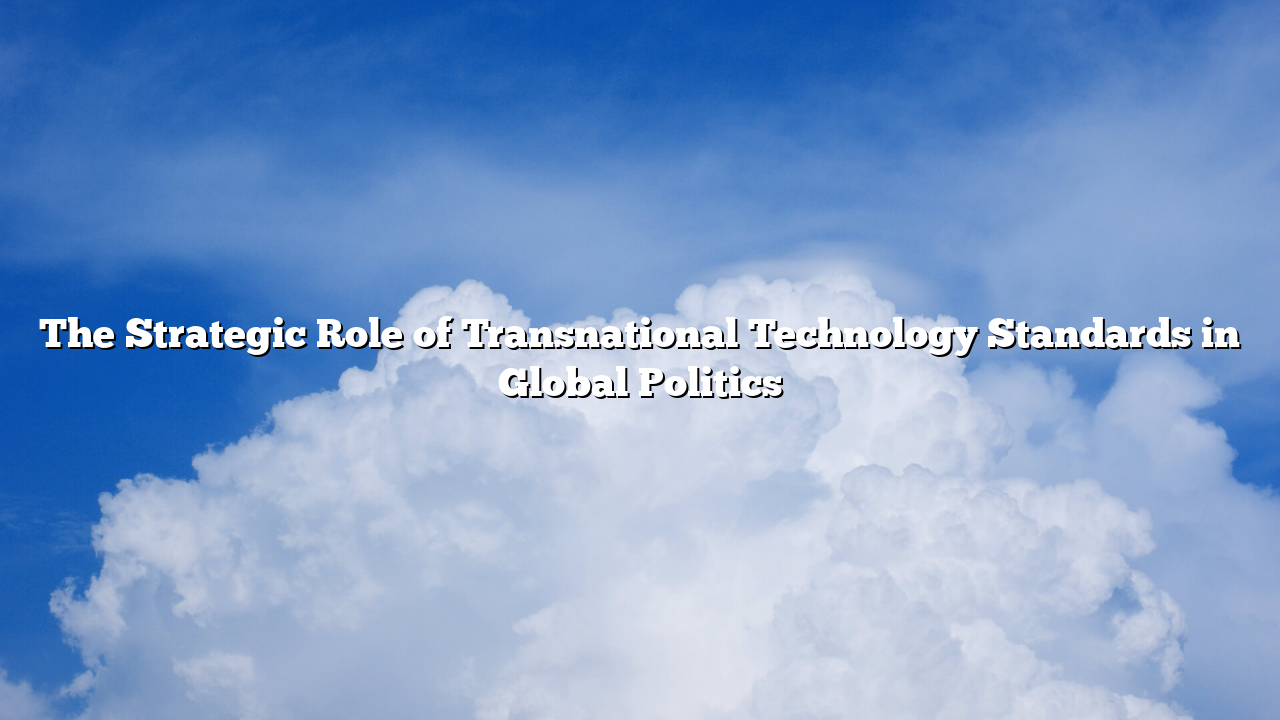Transnational technology standards have emerged as a critical instrument of statecraft, shaping the global industrial, economic, and strategic Pokemon787 alternatif landscape. Beyond their technical function, standards for telecommunications, semiconductors, AI, and renewable technologies now determine which nations dominate key industries, influence trade networks, and set long-term geopolitical alignments.
China has systematically leveraged standards to extend influence. By promoting domestic frameworks for 5G, AI, and smart city technologies as international references, Beijing integrates partner countries into operational networks compatible with Chinese industrial models. Adoption of these standards creates structural dependencies: nations aligning with Chinese protocols gain immediate technological access but must adhere to norms that embed long-term industrial and regulatory alignment with China. The strategic effect is subtle yet durable, influencing market behavior and political orientation.
The United States focuses on coalition-based standard-setting. Through multinational bodies and industry partnerships, Washington promotes interoperability, security standards, and regulatory alignment in critical technology sectors. By ensuring allied states adopt compatible frameworks, the U.S. consolidates industrial power, secures supply chains, and maintains leverage over emerging markets. This approach ensures that technical integration simultaneously reinforces political and strategic alignment.
Europe emphasizes normative and regulatory influence. The EU sets high standards for data privacy, cybersecurity, AI ethics, and environmental compliance. Adoption of European standards is incentivized through market access, investment partnerships, and industrial collaboration. Brussels’ approach combines soft power with economic leverage, embedding influence into global industrial practices and governance structures. Though less coercive than military instruments, standards create long-term strategic dependencies that shape alignment and operational autonomy.
Emerging economies are increasingly aware of the stakes. Southeast Asia, Africa, and Latin America must choose between competing technological regimes, balancing access to innovation with strategic independence. Decisions regarding which standards to adopt impact industrial policy, supply chain integration, and diplomatic orientation. Misalignment can reduce competitiveness, while careful engagement with multiple frameworks can enhance autonomy and bargaining power.
The structural significance of technology standards is amplified by their dual-use nature. Standards govern both commercial and military applications, from AI-enabled logistics to secure communications, energy systems, and semiconductor production. Nations controlling standards can indirectly influence industrial output, technological adoption, and operational procedures in allied and partner states. This provides leverage without kinetic engagement, shaping the architecture of global influence quietly but effectively.
The insight is clear: technology standards are more than technical specifications; they are geopolitical instruments. Adoption and control of standards determine industrial leadership, strategic alignment, and long-term autonomy. States that dominate standard-setting shape both the operational environment and the trajectory of global technological development.
In conclusion, transnational technology standards have evolved into a decisive arena of multipolar competition. Nations that strategically integrate standards into industrial, diplomatic, and technological policy will wield enduring influence, shaping global networks, economic flows, and political alignment for decades to come.
